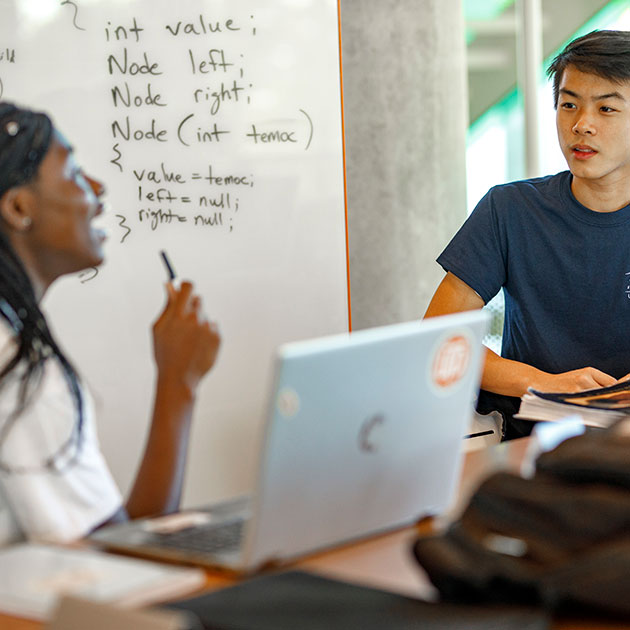Lilly with the American Chamber of Commerce had arranged for us to have lunch at the New World Hotel. We had three guest speakers — all governors for the chamber, known here as AmCham.
Mark Gillin, American Indochina Management, gave us an overview of Vietnam. He told us that aside from China, no country has performed as well as Vietnam since 1999. This is due to exports, foreign direct investment and domestic consumption.
Year-to-date foreign-direct-investment pledges (if realized) will be up 77.6 percent since last year. FDI is focused on the manufacturing segment. The segment has transitioned from garments, footwear and furniture to technology.
The middle class is expected to double by 2020, from 20 million people to 33 million. This increase in the middle class increases domestic spending. Every day 5,000 more motorbikes enter the streets. The single-biggest expense of the middle class is education. There is a growing demand for better healthcare and education.
Gillin shared a CBRE quote regarding millennials. Over the past 10 years, 3,165 students went to the U.S. for an education. That number has now increased to 21,403 students. Ten years ago, there were 14 premium private English language centers in Vietnam. Now there are 115. Ten years ago, there were 47 supermarkets. Now there are 1,035. This is driving the demand for logistics (including refrigerated trucks).
Healthcare remains a concern, with a focus on food safety. (Many street vendors use untreated water to prepare food and wash dishes.) Vietnamese spend $2.1 billion on healthcare overseas. There is a demand for more healthcare facilities, but this is further complicated by the need to find educated nurses and doctors to provide healthcare services.
Mark Gillin, Founder, Chairman, Managing Director, American Indochina Management (AIM)
Gillin transitioned from the American Chamber perspective to his own company. He has lived in Vietnam for the past 24 years. He began by talking about “economic osmosis.” There are high concentrations of people and needs, and there are low concentrations. If you create a permeable membrane, the two will eventually even out (urbanization).
In 1993, he started an entrepreneurial holding company with the mission to “benefit from Indochina’s transition to a market-oriented, globally integrated economy.” The company began by serving as a consultant to Parsons (a U.S.-based civil engineering company) to identify and win projects. Then, it entered into the building-products business, importing building materials for hotels, homes, education facilities, healthcare facilities and more. He noted that in the room, where we were having lunch, his company had supplied the drinking glasses, the table linens and the wall partitions. It has since started a small $22 million fund focusing on small-business entrepreneurs. They source products from all over the world. There is a 20 percent tax burden on incoming materials.
Jocelyn Tran, Regional Senior Director of Walmart Global Sourcing
Next up was Jocelyn Tran, who grew up in Los Angeles. She began by showing us a short video of Walmart’s CEO, who is 48 years old. He began his career as a stock boy for Walmart.
Walmart is the U.S.’ largest retailer, generating $478 billion annual revenue, under 68 banners in 28 countries. Every week, 260 million customers shop in 11,500 stores. Texas has the largest number of Walmart stores in the U.S. — 380 — which is 10 percent of the stores in the U.S. Texas also has 86 of the 660 Sam’s Club stores, representing 12 percent.
Tran heads the global sourcing for Walmart in Southeast Asia (SEA). Walmart came to Vietnam in 2013 in preparation of the Trans-Pacific Partnership. Most of the apparel made in SEA comes from Vietnam and Indonesia. Locally sourced food comes also comes from Vietnam and Indonesia. Shoes come from Cambodia.
Walmart sells a $1.68 spaghetti strap tank top in the U.S. It is made from the same fabric that Victoria’s Secret uses. Walmart would sell 2 million units over a weekend. The company estimates it lost $800 million because it could not keep up with the demand.
Challenges that Walmart face are lack of efficiencies in manufacturing and the annual 12 percent to 15 percent increase in minimum wage each year. Machines will quickly create the necessary efficiencies that the company needs. The number one export in Vietnam is mobile phones. The number two export is apparel.
Currently there are no Walmart stores in Vietnam. However, the company is trying to engage in a number of corporate social responsibility initiatives. Tran told us that, especially on the border of China and Cambodia, there are entire villages with no young ladies (ages 12 – 25) because they have all been taken by human traffickers. The new approach is now for the traffickers to approach one young lady near the industrial parks and ask her to bring her friends for a new opportunity that will pay more. These girls are then stolen and sold into slavery. They are working with the Pacific Links organization to educate the young women working in the factories to prevent this from happening.
Walmart is also investing in women-owned businesses. Tran indicated that women re-invest 90 percent of their income back into their family. Men only invest 30 percent back into their family. Sixty percent of shoppers are women. By investing in women, Walmart is creating a more sustainable economic environment.
It also is piloting a program for energy sustainability at the facility that makes the material for its garments.
The company also is trying to create a more collaborative environment between the workers and management. The Vietnamese do not know how to communicate with their management when they want a change. They simply go on strike. By creating a more collaborative environment, Walmart is hoping to mitigate strikes.Regional Senior Director of Walmart Global Sourcing
Next up was Jocelyn Tran, who grew up in Los Angeles. She began by showing us a short video of Walmart’s CEO, who is 48 years old. He began his career as a stock boy for Walmart.
Walmart is the U.S.’ largest retailer, generating $478 billion annual revenue, under 68 banners in 28 countries. Every week, 260 million customers shop in 11,500 stores. Texas has the largest number of Walmart stores in the U.S. — 380 — which is 10 percent of the stores in the U.S. Texas also has 86 of the 660 Sam’s Club stores, representing 12 percent.
Tran heads the global sourcing for Walmart in Southeast Asia (SEA). Walmart came to Vietnam in 2013 in preparation of the Trans-Pacific Partnership. Most of the apparel made in SEA comes from Vietnam and Indonesia. Locally sourced food comes also comes from Vietnam and Indonesia. Shoes come from Cambodia.
Walmart sells a $1.68 spaghetti strap tank top in the U.S. It is made from the same fabric that Victoria’s Secret uses. Walmart would sell 2 million units over a weekend. The company estimates it lost $800 million because it could not keep up with the demand.
Challenges that Walmart face are lack of efficiencies in manufacturing and the annual 12 percent to 15 percent increase in minimum wage each year. Machines will quickly create the necessary efficiencies that the company needs. The number one export in Vietnam is mobile phones. The number two export is apparel.
Currently there are no Walmart stores in Vietnam. However, the company is trying to engage in a number of corporate social responsibility initiatives. Tran told us that, especially on the border of China and Cambodia, there are entire villages with no young ladies (ages 12 – 25) because they have all been taken by human traffickers. The new approach is now for the traffickers to approach one young lady near the industrial parks and ask her to bring her friends for a new opportunity that will pay more. These girls are then stolen and sold into slavery. They are working with the Pacific Links organization to educate the young women working in the factories to prevent this from happening.
Walmart is also investing in women-owned businesses. Tran indicated that women re-invest 90 percent of their income back into their family. Men only invest 30 percent back into their family. Sixty percent of shoppers are women. By investing in women, Walmart is creating a more sustainable economic environment.
It also is piloting a program for energy sustainability at the facility that makes the material for its garments.
The company also is trying to create a more collaborative environment between the workers and management. The Vietnamese do not know how to communicate with their management when they want a change. They simply go on strike. By creating a more collaborative environment, Walmart is hoping to mitigate strikes.
Michele Auerbach, Country Manager, 7-Eleven Inc.
Michele Auerbach is a Vietnamese-American. Her parents met during the war. One of our students had told her that he read the 7-Eleven Japan case during their program so she was able to equate 7-Eleven’s expansion into Vietnam with that case.
7-Eleven opens its first store in Vietnam in 70 days. This model has been in development since 2009. The company needs to localize the store to the Vietnamese culture. 7-Eleven operates in 16 countries, 18 territories (think Taiwan and Hong Kong, as separate territories from China). Vietnam will be the 19th territory. 7-Eleven has 62,500 stores. It is the largest retailer in the world.
She indicated that the parent company has been located in Japan since 1975. She works for Corporate out of Dallas. The store in Vietnam will be 100 percent Vietnamese owned. The company sold the franchise rights to a single buyer for the region. (Eighty percent of the U.S. stores are franchised.)
Auerbach also mentioned the lack of an established refrigerated logistics supply chain. Additionally, 7-Elen is introducing a new business model to Vietnam, and it has been a long, slow process.
Rather than modify the U.S. 7-Eleven information-technology system that has undergone hundreds of upgrades, the company is building the Vietnam IT system from scratch! 7-Eleven decided it was entering into an IT-centric market, and it wanted to take advantage of that.
The target customer is 18 to 40 years old. The average age of a Vietnamese is 28 years old. Because of traffic congestion, most people eat street food for lunch, but food safety is becoming an increasing concern. 7-Eleven will be the last entrant into a crowded market, and it had to decide what would it take to get someone on a scooter to pull off the road, take off a helmet and all sun gear and go into a 7-Eleven and buy a Slurpee? Quality and food safety. The company also has a very Americano brand and the Japanese appeal going for it. Jocelyn piped in to reinforce the message about food safety, indicating that people will pay four times more for a cup of Starbucks coffee because they know it will not make them sick. Half of daily purchases are expected to be fresh food.
Regarding franchising, there is a large fee. Auerbaach wouldn’t tell us what it was other than to say that the franchisee had to put down seven years of operating capital. She also told us that a Slurpee machine in the U.S. is $4,000. It is $12,000 in Vietnam.
7-Eleven looks at density when determining where stores are located. In Asia, you need 2,500 people to support a store. In Vietnam, the company is assuming 69,000. The company expects to be the fastest-growing store in SEA with 100 stores in three years and 1,000 stores in 10 years. The average store will be 80 to 120 square meters. However, 60 square meters can run $25,000 a month. (That’s a lot of Slurpees!) The company hopes to be cash-flow positive in three to five years.
Auerbach talked about “red invoices.” This is an invoice that must be documented for the government. Each store will have more than 2,000 stock-keeping-unit (SKU) codes. SKUs will be stored (no longer than two weeks) at the Consolidated Distribution Center (CDC). At any time, a truck can have 1,000 SKUs. Each SKU has a “red invoice,” which means 7-Eleven could possibly generate 600,000 red invoices a month. The company met with Vietnam’s equivalent to a Department of Defense, with local police and with the Ministry of Commerce with a proposal to change the process to allow 7-Eleven to scan the SKUs and to submit the scans once a month. After much discussion, the proposal was approved.





